 by "ttyymmnn" (ttyymmnn)
by "ttyymmnn" (ttyymmnn)
Published 05/12/2017 at 12:35
 by "ttyymmnn" (ttyymmnn)
by "ttyymmnn" (ttyymmnn)
Published 05/12/2017 at 12:35
Tags: Planelopnik
; planelopnik history
STARS: 6
Welcome to This Date in Aviation History , getting you caught up on milestones, important historical events and people in aviation from May 10 through May 12.
!!! UNKNOWN CONTENT TYPE !!!
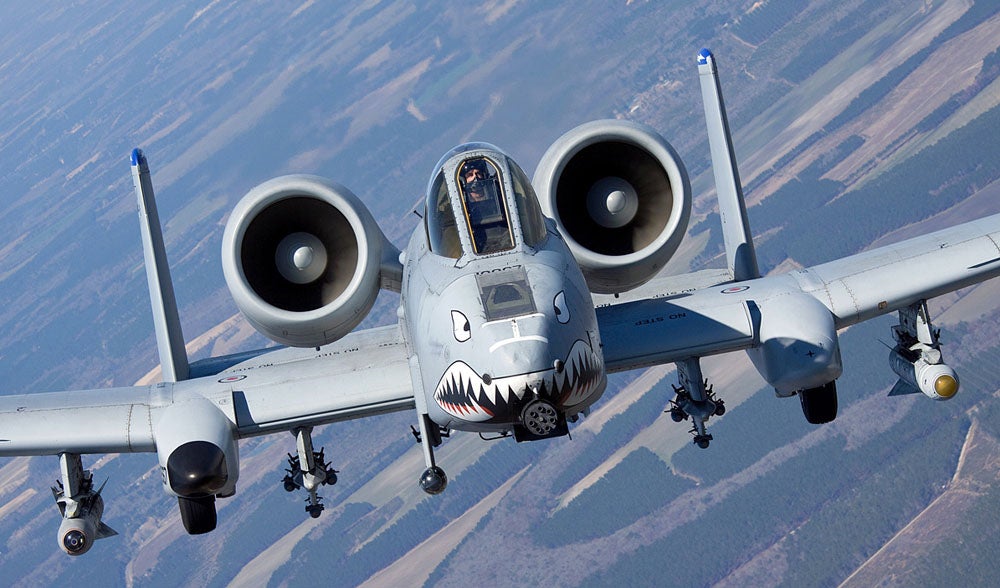
May 10, 1972 – The first flight of the Fairchild Republic A-10 Thunderbolt II. On the night of August 20, 1968, half a million Warsaw Pact soldiers and thousands of tanks and armored vehicles rolled into Czechoslovakia , taking control of the country in a single night and putting an end to the Prague Spring . That watershed event in the Cold War demonstrated to the West that the massed might of Soviet armor was a serious and perhaps imminent threat, and one that land power alone was not prepared to deal with. It would take air power to help stop the hordes of Soviets tanks that might invade Western Europe, but at that time, there was no specialized aircraft to do the job. Close air support (CAS) had become somewhat of a lost art. But that hadn’t always been the case. One of the first tank busters, the Hawker Hurricane Mk IID , was a regular fighter armed with a pair of 40mm cannons which proved devastatingly effective against German tanks in WWII. For their part, the Germans developed the heavily armed Henschel Hs 129 , the first aircraft specifically designed for close air support. But the move to jet fighters after the war saw the rise of multi-role fighters, ones that could both dogfight and attack ground targets, but not designed with a singular purpose. Like the Germans in WWII, the NATO allies realized that they needed a purpose-built CAS aircraft, one that could fly low and slow over the battlefield, be rugged enough to sustain battle damage, and have the firepower to knock out a tank in a single pass. In 1966, the US Air Force created the Attack Experimental (A-X) program office to find a suitable aircraft, and by 1970 a specific request for proposals was made to the defense industry. The new aircraft would have a maximum speed of only 460 mph, but it would be capable of carrying 16,000 pounds of external stores (by comparison, a loaded Boeing B-29 Superfortress carried 20,000 pounds of bombs). Most importantly, the new aircraft would be developed around the massive General Electric GAU-8 Avenger 30mm cannon, a seven-barrel Gatling gun that could fire over 4,000 rounds per minute. Compared to other guns in use in CAS aircraft at the time, the Avenger had twice the range, took half the time to reach the target and could deliver three times the mass of projectiles to the target.
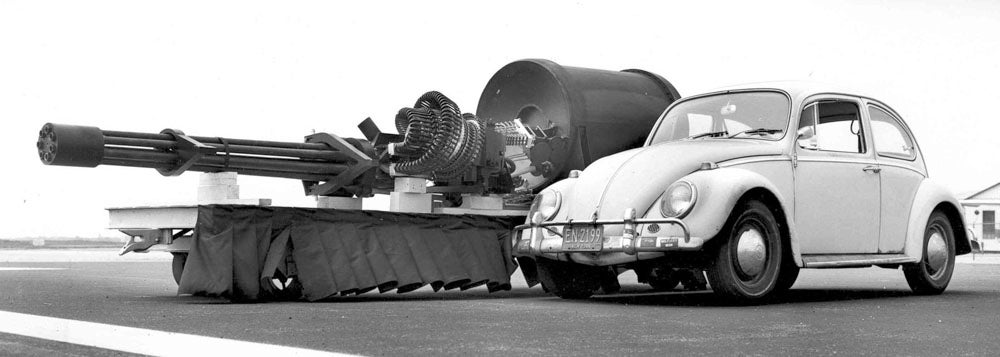
The Air Force selected two finalists, the Northrop YA-9 and the Fairchild Republic YA-10. The YA-9 was a relatively traditional aircraft with fuselage-mounted engines and a shoulder wing, roughly comparable to the Russian Sukhoi Su-25 . The YA-10, however, was a radical departure from traditional design, with a low, straight wing for excellent low-speed maneuverability, engines mounted in pods above the fuselage to protect them from ground fire, and twin tail fins for redundancy. Twelve hundred pounds of titanium armor formed a tub that protected the pilot and fragile avionics. The massive cannon was mounted slightly off-center, with the firing barrel directly on the aircraft’s centerline so that the gun’s recoil wouldn’t force the nose of the aircraft off the target. Its position underneath the cockpit also helped prevent the ingestion of gun gases into the engines. Following a fly-off between the two competing designs, the Air Force selected the YA-10 as the winner in April 1973 and took delivery of the first production A-10s in March 1976. At first, some Air Force pilots balked at the idea of flying low and slow over the battlefield. But in the Gulf War of 1990-1991, the Thunderbolt II showed how it was truly worthy of its WWII namesake, the P-47 Thunderbolt . During the war, A-10s destroyed more than 900 Iraqi tanks, 2,000 military vehicles, and 1,200 artillery pieces. A-10 pilots even shot down two enemy helicopters. The Thunderbolt II maintained a stellar 95.7 percent mission-capability rate over 8,100 sorties. The Air Force was so impressed that they dropped any ideas of replacing the twenty-year-old aircraft. However, that love affair may be coming to an end. Despite continued excellent service in the low-intensity conflicts in Iraq and Afghanistan, and with no true dedicated successor, the Air Force is looking to retire the A-10 to free up money for production of the Lockheed Martin F-35 Lightning II , a multi-role stealth aircraft that has yet to prove that it can live up to its WWII Lockheed P-38 Lightning namesake, or effectively perform the CAS role that is so brilliantly carried out by the A-10. The US Congress has stepped in, trying to compel the Air Force to keep the A-10 flying, but it is a political and budgetary battle that is far from over. (US Air Force photos)
!!! UNKNOWN CONTENT TYPE !!!
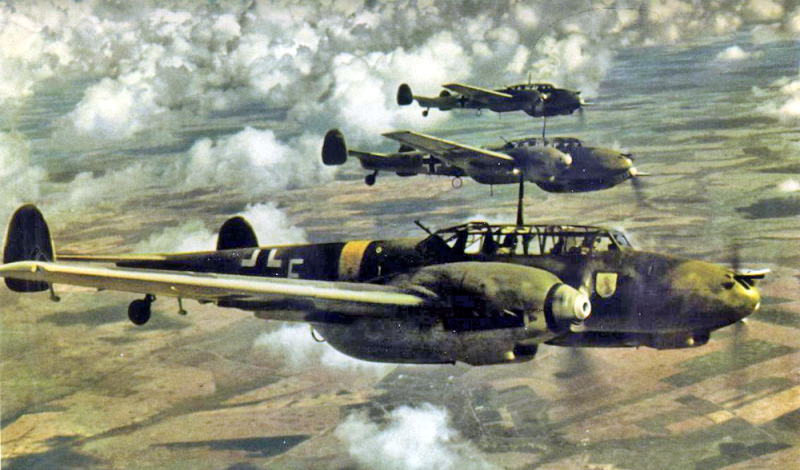
May 12, 1936 – The first flight of the Messerschmitt Bf 110 Zerstörer (Destroyer) . When Adolf Hitler came to power in Germany in 1933, he already had his sights set on expanding German territory. He immediately set about rebuilding the German military, along with the air force which had been dismantled by terms of the Treaty of Versailles following WWI. Though international development of the single-seat fighter had been proceeding, short range was becoming the Achilles heel of fighters of the pre-WWII era. In an effort to make a flying fighting machine with greater range, designers began to consider twin-engine aircraft that could offer longer operational range with the added benefit of greater firepower. In 1935, Hermann Göring was appointed as the head of the fledgling Luftwaffe and became a vocal champion for the concept of the Kampfzerstörer (battle destroyer), a heavily armed aircraft that, theoretically at least, could smash through enemy fighter screens while also providing protection for larger bombers. Focke-Wulf, Henschel, Arado and Messerschmitt submitted prototypes for the new fighter-bomber, and even though Messerschmitt omitted the internal bomb bay in order to increase range and speed, his design was selected as the winner. Though the Bf 110 wasn’t the most maneuverable aircraft (the Bf 110 is often erroneously referred to as the Me 110; “Bf” comes from Bayerische Flugzeugwerke , where Willy Messerschmitt was chief designer), its high speed allowed it to outrun the Messerschmitt Bf 109 fighter in service at the time. Initially, the Zerstörer was produced in three basic variants: the B-1, which was armed with four 7.92 mm MG 17 machine guns and two 20mm MG FF cannons; the B-2 reconnaissance version, which replaced the two cannons with cameras while keeping the machine guns; and the B-3, which served as a trainer. The cannons in the B-3 were also removed to make way for more radio equipment. Though the Bf 110 was fast for its time, and had good range, Luftwaffe planners knew that its service days were numbered, given the rapid pace of aircraft development. Even as Bf 110s were taking part in the invasion of Poland at the outbreak of WWII in 1939, its successor, the Messerschmitt Me 210 , was ready for flight. However, the Me 210 suffered from serious teething problems, particularly with its aerodynamics, and was never produced in significant numbers. The Bf 110 was forced to soldier on throughout the war, where its weaknesses quickly became apparent. Though it served effectively in the Polish, Norwegian and French campaigns early in the war, the Battle of Britain showed that the Zerstörer was by no means a fighter, and it suffered bitterly as its pilots tried to protect German bombers attacking England. It was entirely unable to dogfight with the more agile Hawker Hurricane and Supermarine Spitfire , and its single defensive machine gun proved to be ineffective at fending off attackers. These weaknesses were mitigated by tactics such as diving on unsuspecting fighters from high altitude, but the Kampfzerstörer concept proved effective only on paper. On August 15, 1940, nearly 30 Bf 110s were lost in one day of combat, and 23 more were lost over the next two days. But even with its impending obsolescence, the Bf 110's days were not over.

While it was eventually withdrawn from daylight fighting, the advent of the aerial Lichtenstein radar meant that Bf 11os could now be turned into potent night fighters, and it became the primary weapon of the German Nachtjagdgeschwader (night fighter wing). To deal with incoming British bombers, some night-fighting 110s were armed with upward firing twin cannons, nicknamed Schrage Musik . Since the British bombers had no ventral turret, the 110s flew underneath the unsuspecting bombers and fired directly upward. In one instance, a Luftwaffe pilot dispatched four RAF bombers in just 30 minutes using this system. Though the Luftwaffe was ultimately unable to stop all the British bombers during their nighttime missions, radar-equipped Bf 110s exacted a heavy toll, with Germany’s top night fighter ace Major Heinz-Wolfgang Schnaufer claiming 121 victories with Nachtjagdgeschwader 1 and 4. In all, over 6,000 Bf 110s were produced, and while it never lived up to its original billing, the Zerstörer still played a vital role in the German Luftwaffe throughout the war in every theater of operations. (Photo author unknown; Imperial War Museum)
!!! UNKNOWN CONTENT TYPE !!!
!!! UNKNOWN CONTENT TYPE !!!
!!! UNKNOWN CONTENT TYPE !!!

May 10, 2012 – The death of Evelyn Bryan Johnson. Johnson was born in Corbin, Kentucky on November 4, 1909 and began her flying career with the US Army Air Corps in 1944. By the time she quit flying at the age of 96 she had logged 57,635.4 flying hours, earning the international record for the greatest number of flying hours logged. Johnson served as a colonel in the Civil Air Patrol , and also a flight instructor, garnering the distinction of being the oldest instructor pilot in the world and training more pilots and giving more FAA exams than any other instructor. On July 21, 2007, Johnson was inducted into the National Aviation Hall of Fame , joining Amelia Earhart , Jacqueline Cochran , Sally Ride and other famous flyers. (Photo by Wade Pane via The Washington Post )
!!! UNKNOWN CONTENT TYPE !!!
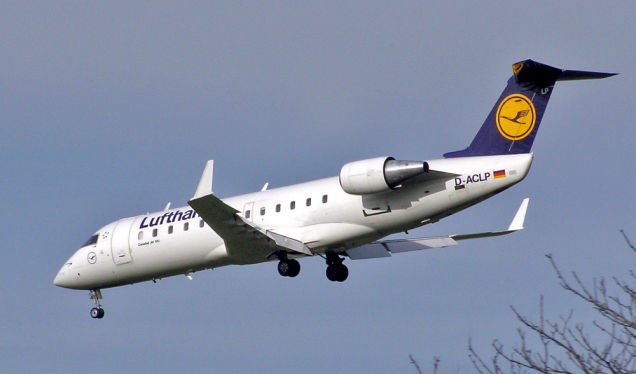
May 10, 1991 – The first flight of the Bombardier CRJ100. The CRJ traces it roots back to 1989 with the beginning of the Canadair Regional Jet program which sought to develop a medium-range jet airliner to seat up to 52 passengers. The design was originally developed as a stretched variant of the Canadair Challenger CL-600 business jet, and following the CRJ100's entry into service it was quickly developed into the CRJ200 ER and LR, each with increased range. The CRJ100, along with its larger CRJ200 variant, have proven very popular with smaller airlines, as well as some large airlines who use the regional jet to serve smaller airports. A total of 935 aircraft of both variants have been produced. Though production has ended, the airliner remains in service. (Photo by Arpingstone via Wikimedia Commons )
!!! UNKNOWN CONTENT TYPE !!!

May 10, 1986 – The U. S. Navy selects the McDonnell Douglas F/A-18 Hornet as the official airplane of the Blue Angels.
The Blue Angels were founded in 1931, and one of their hallmarks has always been that they fly the same combat aircraft currently in use in the fleet. Beginning with the
Grumman F6F Hellcat
, the Blues have flown every frontline fighter since then, transitioning to jets in 1949 with the
Grumman F9F Panther
. With the adoption of the Hornet, the Blues had their first 4th generation fighter, and while they often fly some of the oldest aircraft in the fleet, the 2016-2017 air show season will be the last for the legacy Hornets, as the Blues are scheduled to transition to the
Boeing F/A-18E/F Super Hornet
in September, 2017.
(Photo by the author)
!!! UNKNOWN CONTENT TYPE !!!
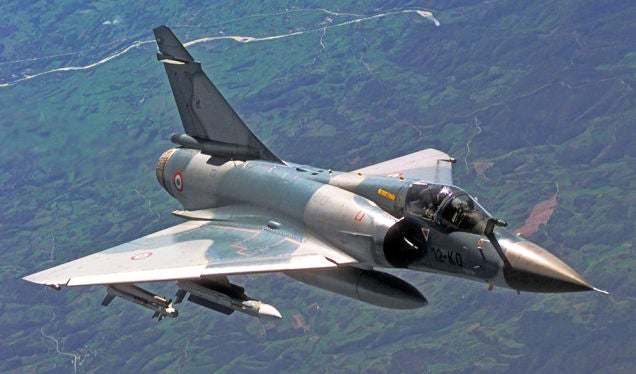
May 10, 1978 – The first flight of the Dassault Mirage 2000. Based on the delta wing Mirage III , the Mirage 2000 was developed in the 1970s as a lightweight fighter to compete with the General Dynamics F-16 Fighting Falcon for the lucrative export market. Since the Mirage 2000 was based on an existing aircraft, the prototype was ready for its first flight in just 27 months. The Mirage 2000 displayed superb handling for a delta-wing aircraft, impressing spectators when it was unveiled at the 1978 Farnborough Airshow , demonstrating that it was indeed a viable competitor to its American challenger. The Mirage 2000 entered service in November of 1982, and over 600 examples were produced, with many sold to Dassault’s export customers. (US Air Force photo)
!!! UNKNOWN CONTENT TYPE !!!
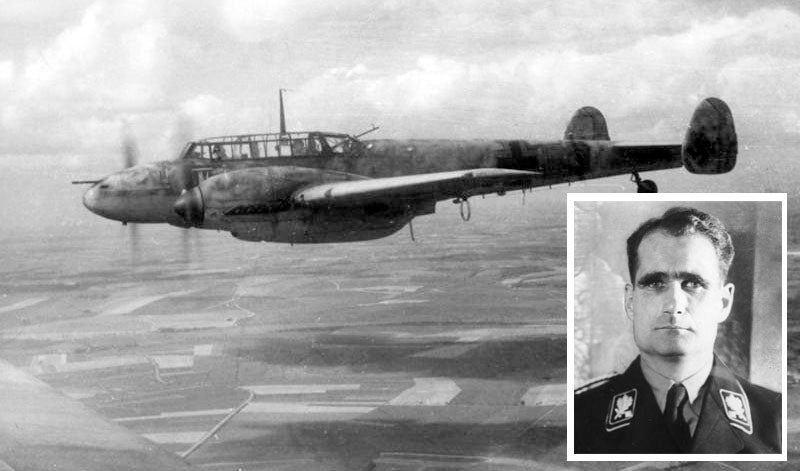
May 10, 1941 – Rudolf Hess parachutes into Scotland. Hess served as an infantryman and pilot in WWI, then rose to power with Adolf Hitler in the 1930s, eventually being named Deputy Führer in 1933. After the outbreak of WWII, Hess feared that Germany faced a ruinous war on two fronts, so he took it upon himself to broker peace with Great Britain. Taking off from Germany in a Messerschmitt Bf 110 , Hess flew to Scotland, hoping to make contact with Douglas Douglas-Hamilton , 14th Duke of Hamilton, whom Hess mistakenly believed was opposed to the war in Europe. Chased by RAF fighters, Hess bailed out and was captured. He spent the remainder of the war as a British captive, never having met British Prime Minister Winston Churchill . Though he was tried at Nuremberg after the war, Hess was not found guilty of war crimes, but nevertheless spent the rest of his life in Spandau Prison, and died there in 1987 at the age of 93. The wreckage of his plane now resides in the Imperial War Museum . (Photos via Deutsches Bundesarchiv)
!!! UNKNOWN CONTENT TYPE !!!
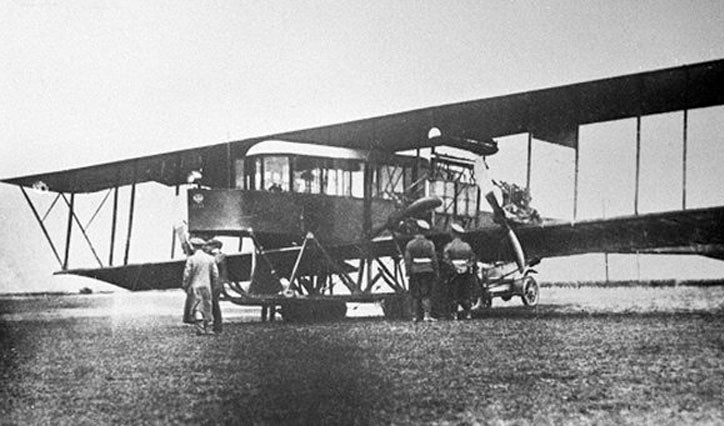
May 10, 1913 – The first flight of the Sikorsky Russky Vityaz . While Igor Sikorsky is perhaps best known in the West for his pioneering work with rotorcraft, he made a name for himself in Russia with the construction of large civilian and military aircraft before emigrating to the US in 1919. The Russky Vityaz was powered by four Argus As I four-cylinder engines and had a top speed of 56 mph. It could carry up to 7 passengers, and the fuselage was large enough that the passengers were able to move about the cabin during flight. Despite the promise of the Russky Vityaz , the sole aircraft was severely damaged when the engine of another airplane fell on it and crushed it. Rather than repair the Russky Vityaz , Sikorsky moved on to develop the even larger Ilya Muromets . (Photo author unknown)
!!! UNKNOWN CONTENT TYPE !!!
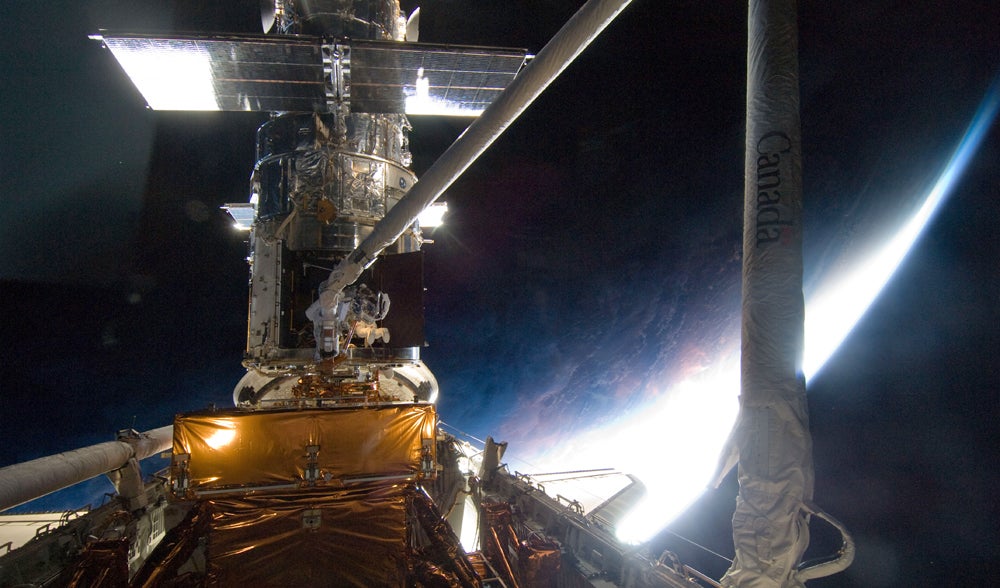
May 11, 2009 – The launch of Space Shuttle Atlantis on STS-125. When the Hubble Space Telescope (HST) was launched into Earth orbit in 1990, it was a landmark event that put a powerful telescope outside of the blurring effects of Earth’s atmosphere. Unfortunately, the HST had some significant flaws that hindered its capabilities, so a series of five servicing missions captured the telescope in orbit to effect repairs. STS-125 was the fifth and final Hubble servicing mission (named Servicing Mission 4, as there was a mission 3A and 3B). The crew of Atlantis installed a new data-handling unit, repaired the Advanced Camera for Surveys and Space Telescope Imaging Spectrograph , replaced the batteries, and also installed the Wide Field Camera 3 and Cosmic Origins Spectrograph , repairs that left the HST fully operational. The crew also installed the Soft Capture Rendezvous System which will allow future manned or robotic missions to safely dispose of Hubble when its mission is complete. (NASA photo)
!!! UNKNOWN CONTENT TYPE !!!
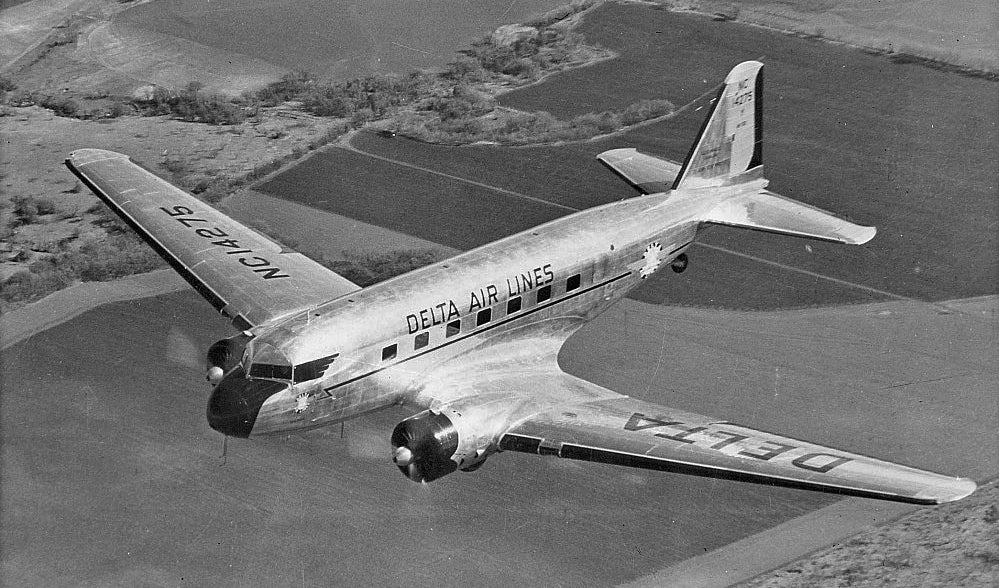
May 11, 1934 – The first flight of the Douglas DC-2,
a twin-engine airliner that was developed by the
Douglas Aircraft Company
to compete with the
Boeing 247
. When rival airline
United Aircraft and Transport Corporation
monopolized the purchase of the 247,
Transcontinental and Western Air
(TWA) sought their own metal monoplane airliner. Douglas responded with the
DC-1
, which was quickly developed into the DC-2 with more powerful engines and room for 14 passengers. The DC-2 proved successful, but was ultimately overshadowed by its successor, the
DC-3
, which became one of the greatest aircraft in history. Just under 200 DC-2s were built and operated by airlines and militaries around the world.
(Photo author unknown)
!!! UNKNOWN CONTENT TYPE !!!
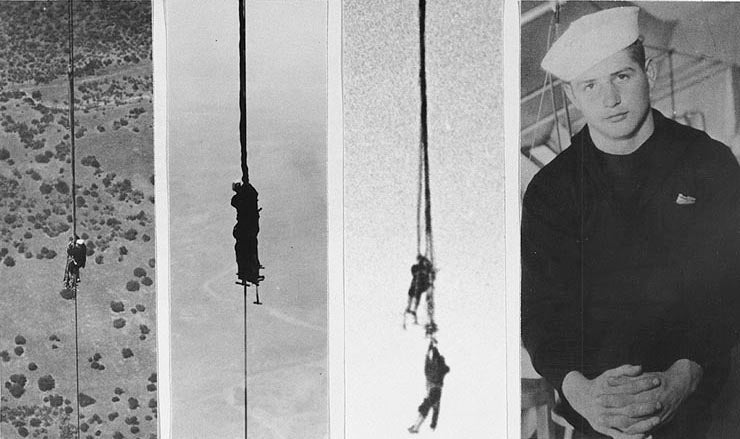
May 11, 1932 – The airship USS
Akron
takes members of the ground crew into the air in a landing accident.
During an attempted landing at Camp Kearny in San Diego, a sudden gust of wind caused the
USS Akron
(ZRS-4) to rise suddenly, and the mooring lines were cut to avoid a potentially catastrophic nose stand. As
Akron
rapidly ascended, four inexperienced groundcrew members clung to a mooring line and were taken aloft. One quickly let go and fell roughly 15 feet, suffering a broken arm, while another two tried to hang on but ultimately fell to their death. The fourth, Seaman Apprentice Bud Cowart, managed to secure himself to the line and was eventually hoisted aboard the airship after an hour spent dangling beneath the airship.
Newsreel footage
captured the accident, and the death of the two crewmen. The incident served as the inspiration for the
first episode
of the
Adventures of Superman
television program starring
George Reeves
.
(US Navy photo)
!!! UNKNOWN CONTENT TYPE !!!
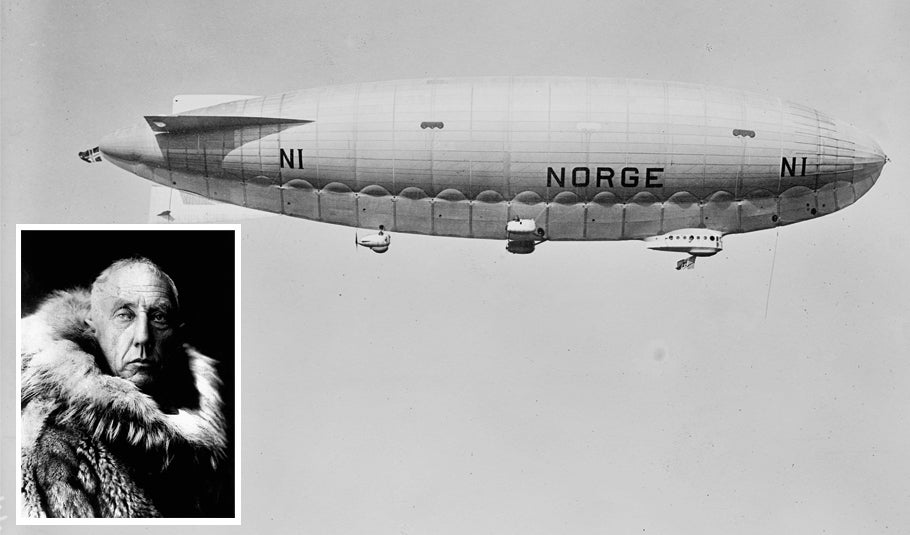
May 11-14, 1926 – Norwegian explorer Roald Amundsen departs to make the first airship flight over the North Pole. Amundsen headed a 16-man expedition to cross the North Pole flying an Italian-built semi-rigid airship named Norge . After leaving Spitzbergen, Norway, the team reached the North Pole at 01:25 (GMT) on May 12 and dropped Norwegian, American and Italian flags onto the polar ice below. They had planned to continue to Nome, Alaska, but ice build up on the propellers forced them to land in Teller, Alaska. While others, including Frederick Cook , Robert Peary , and Richard Byrd all claim to have reached the Pole before Amundsen, those claims remain subject to dispute. Only Amundsen’s flight has been officially verified. (US Library of Congress photos)
!!! UNKNOWN CONTENT TYPE !!!
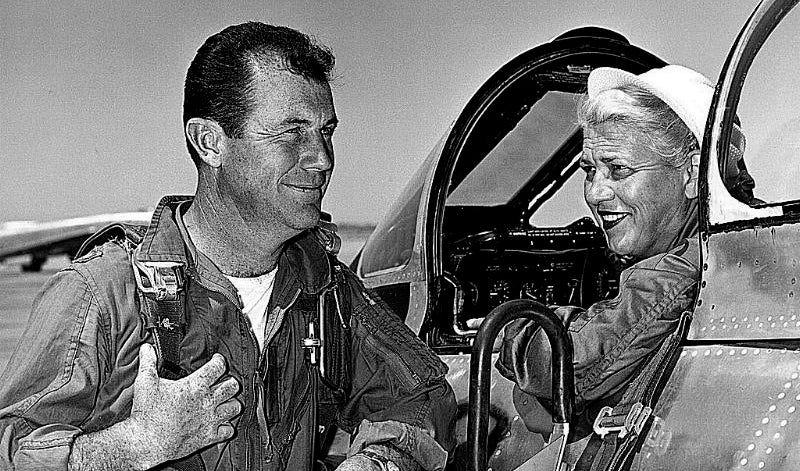
May 11, 1906 – The birth of Jacqueline Cochran, a pioneering American aviatrix who learned to fly after just three weeks of instruction and went on to set many flight records during her lifetime. During the 1930s, Cochran was the only woman to compete for the Bendix Trophy , won five Harmon Trophies , and still holds more speed, distance and altitude records than any other pilot, male or female. During WWII, Cochran helped establish the Women Airforce Service Pilots (WASP), in which women pilots were trained to ferry military aircraft in the US to free up male pilots for war duty. After the war, Cochran continued setting records in jet aircraft, and became the first woman to break the sound barrier while piloting a Canadair Sabre in 1953. She was also the first woman to land and take off from an aircraft carrier. Cochran died in 1980 at the age of 74. (US Air Force photo)
!!! UNKNOWN CONTENT TYPE !!!
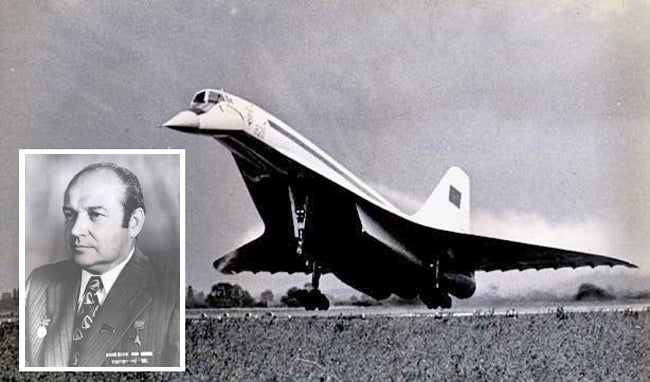
May 12, 2001 – The death of Alexei Tupolev. Tupolev was born in Moscow on May 20, 1925, the son of Andrei Tupolev , a pioneering aircraft designer and founder of the Tupolev Design Bureau . Alexei studied engineering at the Moscow Aviation Institute and slowly worked his way up through his father’s company. He became chief designer in 1963 and assumed control of the design bureau following his father’s death in 1972. Alexei’s work on the development of the Tu-104 , the world’s first truly successful jet airliner, demonstrated his knowledge of jet propulsion, which led to his heading the design team working on the Tu-144 supersonic airliner starting in 1963. Alexei also worked on the Tu-160 supersonic bomber, and Buran , Russia’s attempt to build its own space shuttle. (Tupolev photo author unknown; Tu-144 photo by Lothar Willmann via Wikimedia Commons )
!!! UNKNOWN CONTENT TYPE !!!
!!! UNKNOWN CONTENT TYPE !!!
!!! UNKNOWN CONTENT TYPE !!!
!!! UNKNOWN CONTENT TYPE !!!
!!! UNKNOWN CONTENT TYPE !!!
!!! UNKNOWN CONTENT TYPE !!!
!!! UNKNOWN CONTENT TYPE !!!
If you enjoy these Aviation History posts, please let me know in the comments. And if you missed any of the past articles, you can find them all at Planelopnik History . You can also find more stories about aviation and aviators at Wingspan and Planes You’ve (Probably) Never Heard Of .
!!! UNKNOWN CONTENT TYPE !!!
 "McMike" (mcmike)
"McMike" (mcmike)
05/12/2017 at 12:47, STARS: 3
!!! UNKNOWN CONTENT TYPE !!!
 "RamblinRover Luxury-Yacht" (ramblininexile)
"RamblinRover Luxury-Yacht" (ramblininexile)
05/12/2017 at 12:48, STARS: 1
I’ve loved the look of the Lichtenstein radar ever since I first saw a setup on a model kit for an Arado nightfighter.
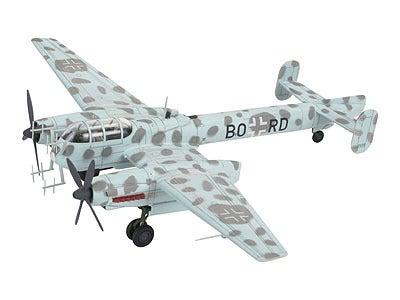
The Ar 240 was an attempt to extend/patch the Bf 110
Kampfzerstörer
philosophy (at least as a nightfighting version), and had two hydraulic turrets as well. Since, y’know, putting turrets on what is nominally a fighter is sane and reasonable.
 "Highlander-Datsuns are Forever" (jamesbowland)
"Highlander-Datsuns are Forever" (jamesbowland)
05/12/2017 at 13:13, STARS: 0
Is there any relation from CRJ to ERJ? I have done some seat time in the ERJ 175, not a bad plane for a tall guy.

05/12/2017 at 13:36, STARS: 2
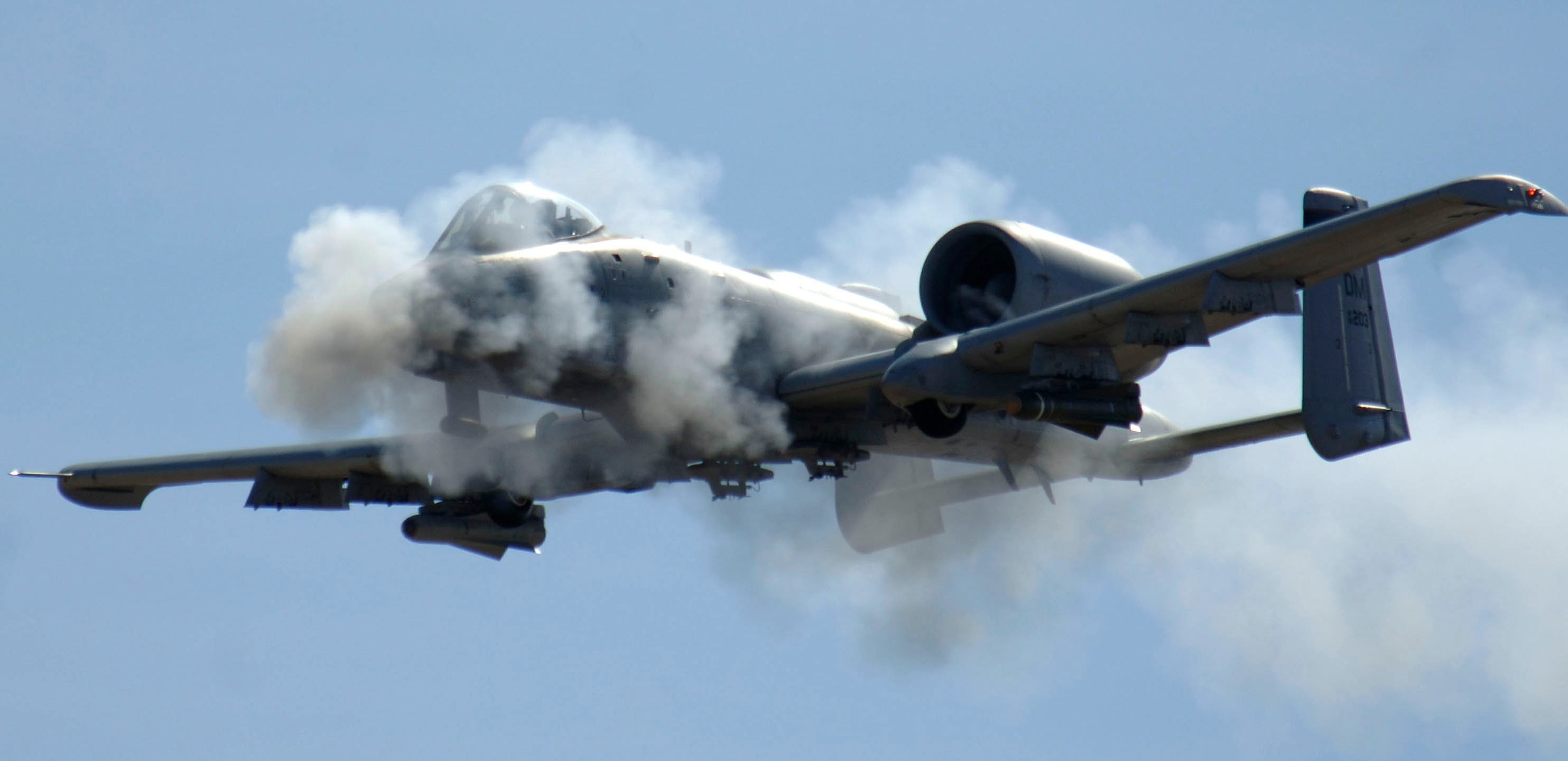
HAPPY BRRRRRRRRRRT DAY!!!
!!! UNKNOWN CONTENT TYPE !!!
 "facw" (facw)
"facw" (facw)
05/12/2017 at 13:57, STARS: 1
None. Totally different companies. The RJ in both cases stands for regional jet, which is why the names are similar. If you can get them, the seats in the first row of coach on the ERJs, where the aisle kinks between the three row abreast first class and the four abreast coach are great, tons of legroom there. The fact there are no middle seats makes for a pretty comfortable cabin in general.
 "facw" (facw)
"facw" (facw)
05/12/2017 at 14:01, STARS: 0
From what I’ve been able to tell, those helicopter kills in the gulf war are the last time a jet had a gun kill on another aircraft. Before that the last one I can find is in the Falklands war, and even in that case the aircraft was still able to fly, but opted to bail after returning to base because it wasn’t clear if its landing gear still worked. In that case a Harrier did the shooting (good times for ground attack aircraft all around). Does make me worry less about the decision not to have an internal gun on the F-35B/C.
 "ttyymmnn" (ttyymmnn)
"ttyymmnn" (ttyymmnn)
05/12/2017 at 15:04, STARS: 0
Nice research. I wouldn’t be at all surprised if the F-35 is the last manned fighter in the US inventory.
 "ttyymmnn" (ttyymmnn)
"ttyymmnn" (ttyymmnn)
05/12/2017 at 15:05, STARS: 0
All the stars.
 "ttyymmnn" (ttyymmnn)
"ttyymmnn" (ttyymmnn)
05/12/2017 at 15:06, STARS: 1
What facw said. The ERJ is built by Embraer of Brazil, while the CRJ is manufactured by Bombardier of Canada.
 "Highlander-Datsuns are Forever" (jamesbowland)
"Highlander-Datsuns are Forever" (jamesbowland)
05/12/2017 at 15:10, STARS: 1
Good job to Brazil then, I liked the ERJ. Not so enamored with the fleet of Delta CRJ’s though.
 "ttyymmnn" (ttyymmnn)
"ttyymmnn" (ttyymmnn)
05/12/2017 at 15:15, STARS: 0
I’m not sure I’ve ever flown in a CRJ. Maybe once. Definitely not on an ERJ.

05/12/2017 at 15:21, STARS: 1
I would. Hitting someone in a tent with a Hellfire by remote is one thing, ACM, actually engaging another aircraft, is very much beyond the capacity any of the current, or even proposed, UCAVs that I’m aware of.
 "ttyymmnn" (ttyymmnn)
"ttyymmnn" (ttyymmnn)
05/12/2017 at 15:24, STARS: 0
One UCAV, sure. But how about 100? Or 1,000? I see a future of swarms of remote or autonomous drones, too many to defend against. Skynet may not be all that far away.
 "Highlander-Datsuns are Forever" (jamesbowland)
"Highlander-Datsuns are Forever" (jamesbowland)
05/12/2017 at 15:24, STARS: 1
The ERJ was a United regional jet FCA to DIA. The CRJ’s are really popular with Delta out of Salt Lake, I usually get a CRJ from SLC/SFO to FCA.
I swear this is true, I few in a CRJ this winter that had a wooden floor in the bathroom.
 "ttyymmnn" (ttyymmnn)
"ttyymmnn" (ttyymmnn)
05/12/2017 at 15:26, STARS: 0
Wood? Interesting.
 "facw" (facw)
"facw" (facw)
05/12/2017 at 15:34, STARS: 1
That I’m not sure about. The problem is that if you take the current unmanned system with remote pilots, some enemy is going to figure out at least how to jam those control communications. Worst case they could hijack the aircraft. Which means you need something that can operate completely autonomously. Fully autonomous aircraft are going to happen (I’d be shocked if we don’t have fully autonomous passenger planes within 25 years, and I only expect it to take that long because people will be uncomfortable with the idea, the tech will get there faster), but to actually identify targets, especially in messy environments, determine they are enemies, and try to destroy them. Then they need to determine if their attacks were successful and strike again if necessary. All while avoiding threats. That strikes me as a very hard problem, as well as a task that people will also not be comfortable with a machine doing (though at some point it will become necessity).

05/12/2017 at 15:42, STARS: 1
I’m not saying there won’t be a QF-50 at some point, but I don’t think manned fighters are on the way out either. You’re going to see both being developed and fielded for some time to come.